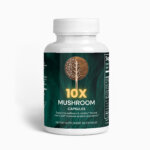
“The Chaga Chronicles: Exploring the Mushroom’s Fascinating History”
What is the future of Chaga as a medicinal resource?
The Chaga Chronicles: Exploring the Mushroom’s Fascinating History
Have you ever heard of the Chaga mushroom? Chances are, if you’re like most people, you haven’t. This elusive organism grows primarily on birch trees in cold climates, such as in Northern Europe, Russia, and parts of Asia. Despite its relative obscurity, the Chaga mushroom has a fascinating history that’s worth exploring.
For starters, the Chaga mushroom has been used for medicinal purposes for centuries by indigenous peoples in these regions. Its use can be traced back to the 16th century, and it was often brewed into teas or decoctions to treat ailments ranging from digestive issues to cancer. In fact, some researchers believe that the Chaga mushroom could hold the key to treating certain types of cancer, as it contains compounds that have been shown to have anti-tumor properties.
But the Chaga mushroom’s uses don’t stop there. In addition to its potential therapeutic benefits, it also has a rich cultural history in many of the areas where it grows. For example, the Chaga mushroom was once used in shamanic rituals in Siberia, where it was believed to have protective qualities against evil spirits. In certain parts of Russia, it was also believed to be a powerful aphrodisiac and was used as a love potion.
Of course, these beliefs and uses are steeped in folklore and superstition, but they do speak to the cultural significance that the Chaga mushroom has had throughout history. Today, the Chaga mushroom is still used in traditional medicine, but it’s also gained popularity as a natural supplement. In recent years, it’s been touted as a superfood due to its high levels of antioxidants and other beneficial compounds.
Perhaps one of the most interesting things about the Chaga mushroom is its appearance. It looks nothing like a typical mushroom – instead, it forms a hard, blackened mass that grows on birch trees. This unique appearance has led to it being referred to as the “king of the mushrooms” or the “diamond of the forest.” It’s also made it difficult to study, as its tough exterior requires special techniques to extract its active compounds.
Despite these challenges, researchers continue to study the Chaga mushroom to unlock its potential. Whether it’s through unraveling its anticancer properties or understanding its cultural significance, there’s no denying that this elusive fungus holds a wealth of knowledge waiting to be discovered. So the next time you come across a Chaga mushroom, take a moment to appreciate its fascinating history and the many mysteries it holds. Who knows – it might just become the next big thing in natural medicine.

























